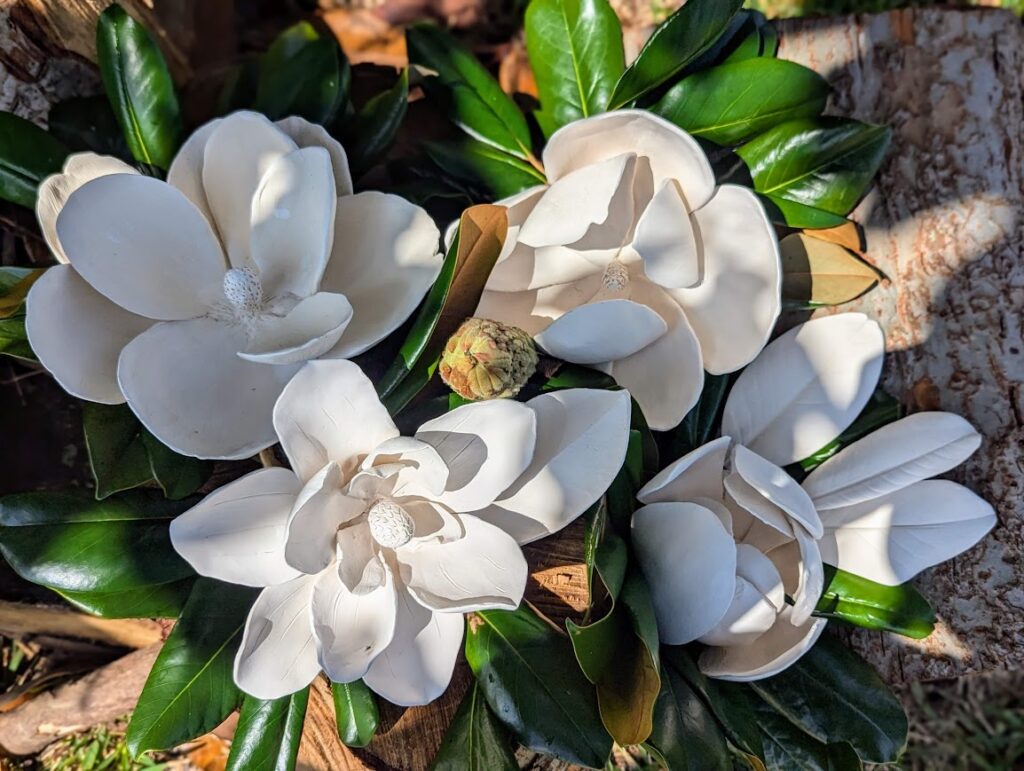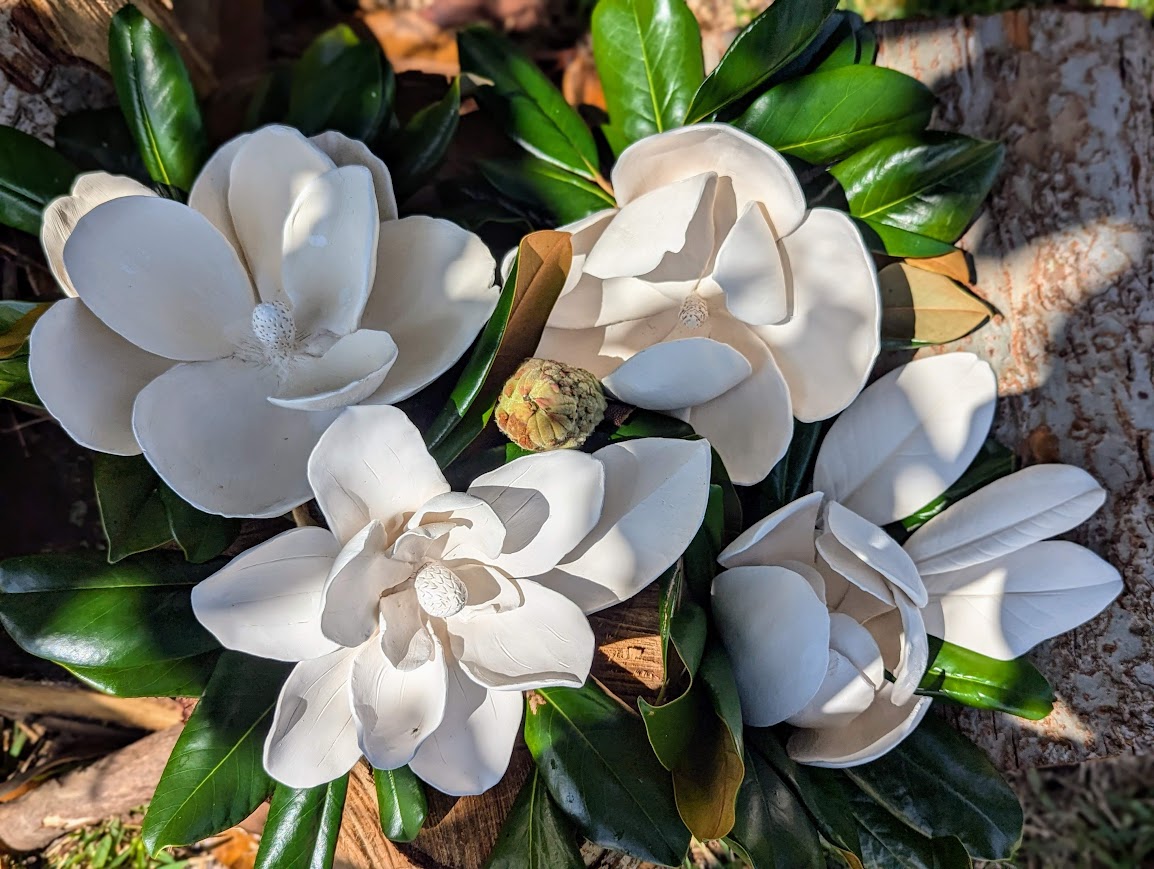
The beauty of pottery lies in its ability to capture and express inspiration from the world around us. For me, the magnolia flower has always been a source of profound inspiration, shaping much of my work in pottery. This blog post delves into the reasons behind my fascination with magnolias, the symbolic meaning of the flower, and how it influences my creative process.
1. The Beauty of Magnolias
Magnolia flowers are known for their large, striking blooms and fragrant scent. Their petals, often creamy white or pink, create a sense of purity and elegance. The tree itself, with its glossy leaves and grand stature, adds to the flower’s majestic appeal. This natural beauty makes the magnolia an ideal muse for artistic expression.
Why Magnolias Inspire Me:
- Visual Appeal: The soft curves and layers of magnolia petals offer endless possibilities for artistic interpretation. Their intricate details challenge and excite me as a potter.
- Symbolism: Magnolias symbolize strength, beauty, and perseverance. These qualities resonate with me and inspire me to create pieces that embody these traits.
- Personal Connection: Growing up in Alabama, the magnolia is a familiar sight, evoking memories of home and the Southern landscapes I cherish.
2. Symbolism and Cultural Significance
Magnolias hold significant meaning in various cultures. They are often associated with nobility, dignity, and a love of nature. In some traditions, magnolias represent purity and grace, making them popular choices for ceremonies and celebrations.
Cultural Symbolism:
- In the South: The magnolia is a symbol of Southern beauty and hospitality. Its presence in gardens and public spaces reflects a deep appreciation for nature and tradition.
- In Asia: In Chinese culture, magnolias symbolize feminine beauty and gentleness. They are also associated with perseverance and purity.
- In Literature and Art: Magnolias frequently appear in literature, poetry, and visual art, symbolizing themes of love, resilience, and natural beauty.
3. Incorporating Magnolia Motifs in Pottery
When creating magnolia-themed pottery, I strive to capture the essence of the flower’s beauty and symbolism. This involves careful attention to detail, from the delicate shaping of petals to the use of color and texture to evoke the flower’s natural allure.
Techniques and Approaches:
- Hand-Building Petals: I meticulously hand-build each magnolia petal, ensuring that the curves and contours reflect the natural form of the flower. This process requires patience and precision to achieve the desired realism.
- Texturing and Detailing: Using various tools, I add texture to the petals and leaves, mimicking the veining and surface details found in real magnolias. This adds depth and interest to each piece.
- Glazing and Coloring: I select glazes that replicate the soft, creamy hues of magnolia petals. Layering and blending techniques help achieve a natural, lifelike appearance.
- Composition and Design: Whether creating a magnolia-inspired bowl, vase, or installation, I consider the overall composition, ensuring that the flower motifs enhance the piece’s aesthetic and functional qualities.
4. The Creative Process: From Inspiration to Creation
Creating magnolia-themed pottery is a journey that begins with inspiration and evolves through a series of creative decisions and technical executions.
Steps in the Creative Process:
- Inspiration Gathering: I spend time observing magnolia trees and flowers, taking photographs, and making sketches. This helps me capture the essence of the flower and generate ideas for new pieces.
- Concept Development: I brainstorm and sketch designs, considering how to incorporate magnolia motifs into functional or decorative pottery. This stage involves a lot of experimentation and refinement.
- Clay Preparation: Selecting and preparing the right type of clay is crucial. I choose clay that complements the intended design and ensures durability.
- Hand-Building and Sculpting: Using hand-building techniques, I shape the clay into the desired form, carefully adding magnolia petals and leaves. This stage requires patience and attention to detail.
- Drying and Firing: The piece is allowed to dry slowly to prevent cracking. Once leather-hard, it undergoes a bisque firing to harden the clay.
- Glazing: I apply glazes, often layering multiple colors to achieve the desired effect. The piece is then fired again to set the glaze and bring out its final colors.
- Finishing Touches: After the final firing, I inspect the piece, making any necessary touch-ups and ensuring it meets my standards of quality and beauty.
5. Sharing the Magnolia Story
Each magnolia-themed piece I create tells a story, not just of the flower itself, but of my personal journey and connection to the natural world. Sharing this story with my clients and audience adds depth and meaning to my work.
Connecting with Clients:
- Custom Commissions: Working with clients on custom magnolia pieces allows me to understand their vision and create something uniquely meaningful to them.
- Gallery Exhibitions: Exhibiting my magnolia-themed pottery in galleries provides an opportunity to share the inspiration and creative process behind each piece.
- Workshops and Talks: Conducting workshops and giving talks about my work helps me connect with others who share a passion for pottery and nature, fostering a sense of community and shared appreciation.
Magnolia-themed pottery is more than just an artistic endeavor; it is a celebration of natural beauty, cultural symbolism, and personal inspiration. Through meticulous craftsmanship and a deep connection to the magnolia flower, I strive to create pieces that not only capture the eye but also resonate with the heart. Each piece is a tribute to the elegance and strength of the magnolia, reflecting the timeless beauty of nature and the enduring power of inspiration.
